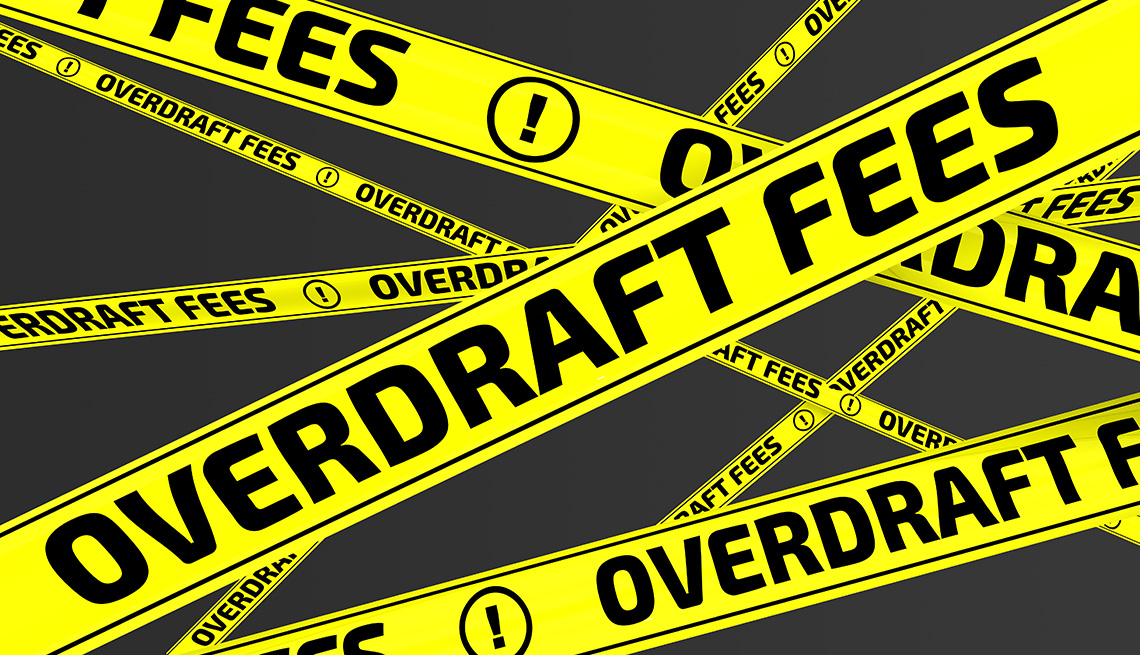Staying Fit
Donna Fuscaldo,
Bank fees have fallen since the pandemic, but that hasn’t stopped consumers from spending huge sums on these added expenses. Dubbed “junk fees” by the Consumer Financial Protection Bureau (CFPB), bank fees drain billions of dollars from American households each year.
They run the gamut from charges for not having enough cash in your bank account to charges for withdrawing money from an out-of-network ATM. In 2022, revenue from overdraft and non-sufficient funds was estimated at $7.7 billion, a 35 percent year-over-year decline from 2019, according to the CFPB.


AARP Membership— $12 for your first year when you sign up for Automatic Renewal
Get instant access to members-only products and hundreds of discounts, a free second membership, and a subscription to AARP the Magazine.
The White House wants to see those fees fall further, proposing a new rule that could slash overdraft fees to as low as $3, a far cry from the $26.21 average as of 2023, according to Bankrate. As it stands, about 90 percent of accounts are subject to an overdraft fee, which can be as high as $38.
The rule would apply to banks and credit unions with over $10 billion in assets, or about 175 of the country’s largest financial firms. Banks, which are expected to challenge the proposed rule, would be required to calculate and disclose an annual percentage rate on every overdraft fee. The CFPB estimates consumers will save $3.5 billion a year or more, or about $150 per household that pays overdraft fees. If the proposed rule doesn’t end up in the courts for years it will go into effect in October 2025.
Consumers don’t have to wait for this to pass. According to Greg McBride, chief financial analyst at Bankrate, bank fees, while “still as ever present as they have been, ... are also more avoidable than ever before.”
If you’re looking to reduce overdraft fees, monthly maintenance charges or fees for withdrawing cash, there are ways to do so — and they don’t require finding a new financial institution. Here’s how you can avoid the most common bank fees.
ATM Fees
Withdrawing money at ATMs is all about convenience, which is why so many consumers go to the nearest location, even if it’s not in their bank’s network. Sure, withdrawals are free at your bank’s ATMs, but if you need cash in a pinch and there is none nearby, the fees for using out-of-network ATMs can add up. To avoid these fees, do the following:
Stay in network. “There are tens of thousands of ATMs around the country in some of these networks,” says McBride. Locating them is easier than ever these days. A quick check of your bank’s website or mobile app should yield a list of nearby ATMs. Also, some online banks that don’t have their own ATMs will reimburse you for any ATM fees you incur.
Get cash back at the point of sale. When you use your debit card at a store checkout and get cash back, you’ll avoid a visit to an ATM and thus a potential fee. “If there are no nearby ATMs and you’re in need of cash fast, consider taking out a larger amount so you have it on hand and don’t get hit with another fee should you need more cash soon after,” says Poulomi Damany, general manager of money and tax at Credit Karma.





































































